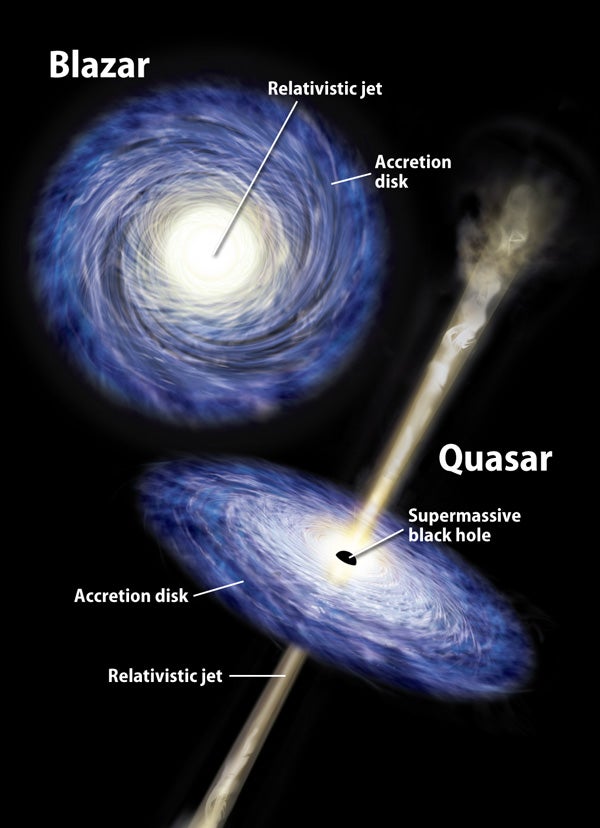
Blazars and quasars are both subclasses of active galactic nuclei (AGN). The accretion of gas onto a
galaxy’s central supermassive black hole powers AGNs. Both appear as bright, variable point sources at galaxies’ centers.
Blazars and quasars are intrinsically the same object — a supermassive black hole with a surrounding accretion disk, producing a jet — but seen at different orientation angles with respect to the jet’s axis. In blazars, we observe the jet almost end-on, while in quasars the jet is oriented at larger angles to us and we can peek inside the central engine.
So while blazars are quasars, only a fraction of quasars are blazars. This model accounts for most of the observed properties of the two classes. Many of these characteristics relate to the objects’ spectral “fingerprints.”
In blazars, we see what appear as faster-than-light movements, smooth energy distributions emitted by particles interacting with photons and magnetic fields, and luminosities that vary on timescales of minutes to years; these are consistent with a relativistic jet pointing toward Earth. In many blazars, during the jet’s low-intensity states, we can sometimes measure thermal emission from the disk or see broad lines in the optical part of the spectrum.
In quasars, we see broad optical lines, but also “thermal spectra” (energy at all wavelengths, like a rainbow), and X-ray emission features due to processes occurring near the black hole; these are consistent with an angled view of the accretion disk. — Rita Sambruna, NASA Headquarters, Washington, D. C.









